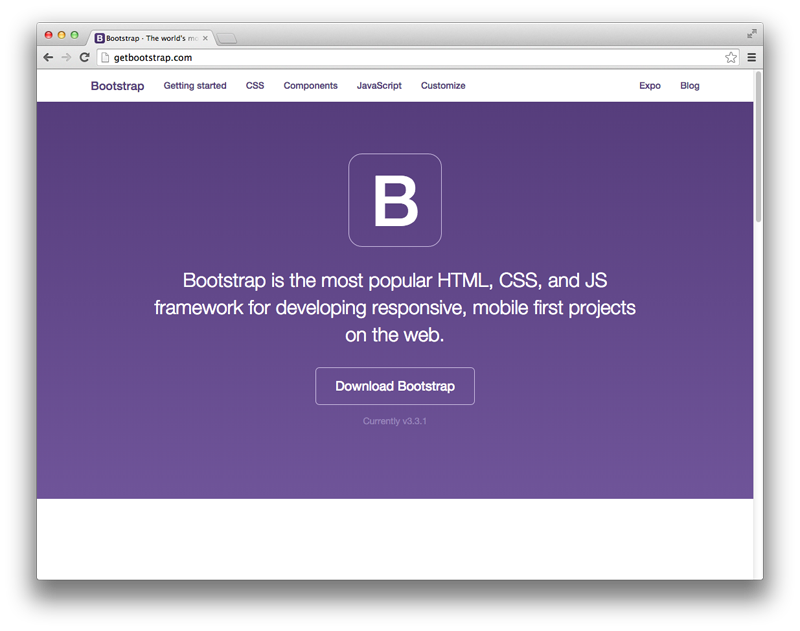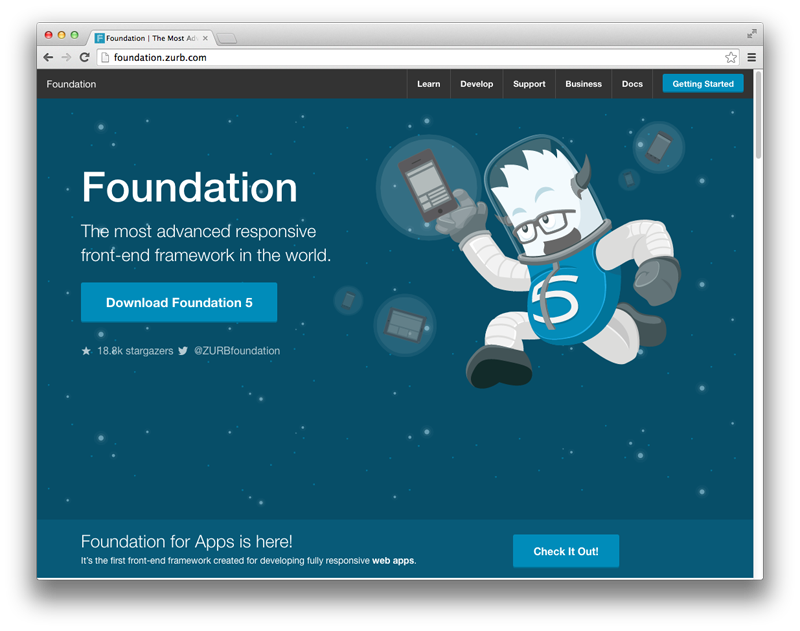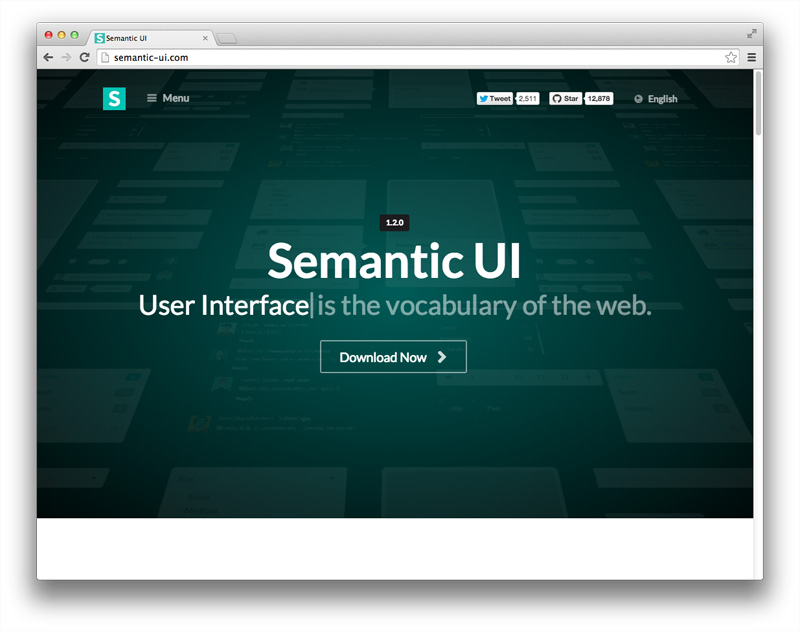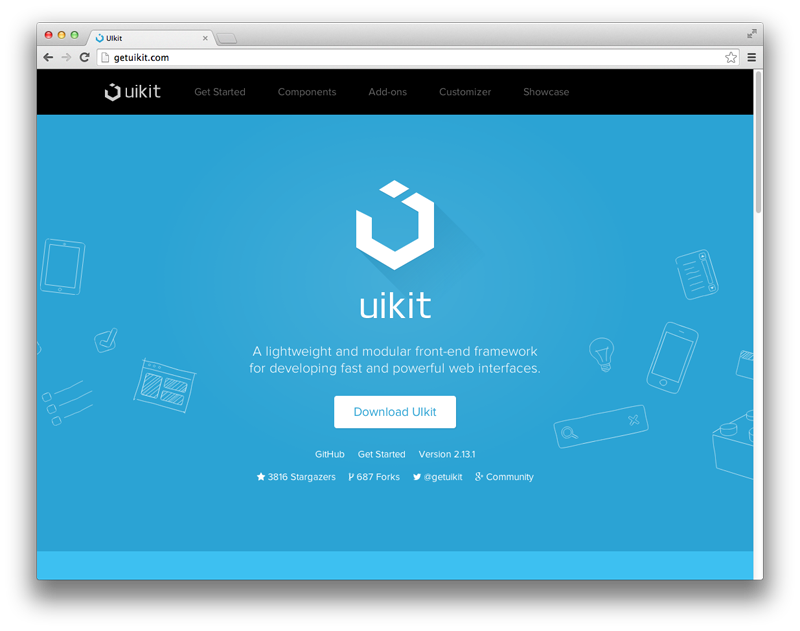Nowadays there is a deluge of CSS front-end frameworks. But the number of really good ones can be narrowed down to just a few.
In this article we’ll compare what I think are the five best frameworks available today. Each framework has its own strengths and weaknesses, and specific areas of application, allowing you to choose based on the needs of a specific project. For example, if your project is simple, there is no need to use a complex framework. Also, many of the options are modular, allowing you to use only the components you need, or even mix components from different frameworks.
The frameworks that I’m going to explore are presented based on their GitHub popularity, beginning with the most popular, which is, of course, Bootstrap.
(Note: Some of the information below will go out of date in the coming weeks and months – e.g. GitHub stars, version numbers – so be aware of this if you’re reading this article long after the publication date. Also note that the framework sizes are the minified sizes of the necessary CSS and JavaScript files.)
1. Bootstrap
Bootstrap is the undisputed leader among the available frameworks today. Given its huge popularity, which is still growing every day, you can be sure that this wonderful toolkit won’t fail you, or leave you alone on your way to building successful websites.

- Creators: Mark Otto and Jacob Thornton.
- Released: 2011
- Current version: 3.3.7
- Popularity: 111,000 stars on GitHub
- Description: “Bootstrap is the most popular HTML, CSS, and JavaScript framework for developing responsive, mobile first projects on the web.”
- Core concepts/principles: RWD and mobile first.
- Framework size: 154 KB
- Preprocessors: Less and Sass
- Responsive: Yes
- Modular: Yes
- Starting templates/layouts: Yes
- Icon set: Glyphicons Halflings set
- Extras/Add-ons: None bundled, but many third-party plug-ins are available.
- Unique components: Jumbotron
- Documentation: Good
- Customization: Basic GUI Customizer. Unfortunately you need to input the color values manually, because there is no color picker available.
- Browser support: Firefox, Chrome, Safari, IE8+ (you need Respond.js for IE8)
- License: MIT
Notes on Bootstrap
The main strength of Bootstrap is its huge popularity. Technically, it’s not necessarily better than the others in the list, but it offers many more resources (articles and tutorials, third-party plug-ins and extensions, theme builders, and so on) than the other four frameworks combined. In short, Bootstrap is everywhere. And this is the main reason people continue to choose it.
(Note: By saying “unique components” I mean that they are unique compared only to the frameworks mentioned in this list.)
2. Foundation by ZURB
Foundation is the second big player in this comparison. With a solid company like ZURB backing it, this framework has a truly strong … well… foundation. After all, Foundation is used on many big websites including Facebook, Mozilla, Ebay, Yahoo!, and National Geographic, to name a few.

- Creators: ZURB
- Released: 2011
- Current version:6.3.1
- Popularity: 25,400 stars on GitHub
- Description: “The most advanced responsive front-end framework in the world”
- Core concepts/principles: RWD, mobile first, semantic.
- Framework size: 197.5 KB
- Preprocessors: Sass
- Responsive: Yes
- Modular: Yes
- Starting templates/layouts: Yes
- Icon set: Foundation Icon Fonts
- Extras/Add-ons: Yes
- Unique components: Icon Bar, Clearing Lightbox, Flex Video, Keystrokes, Joyride, Pricing Tables
- Documentation: Good. Many additional resources are available.
- Customization: Basic GUI customizer similar to the Bootstrap Customizer tool.
- Browser support: Chrome, Firefox, Safari, IE9+; iOS, Android, Windows Phone 7+
- License: MIT
Notes on Foundation
Foundation is a truly professional framework with business support, training, and consulting offered. It also provides many resources to help you learn and use the framework faster and easier.
3. Semantic UI
Semantic UI is an ongoing effort to make building websites much more semantic. It utilizes natural language principles, thus making the code much more readable and understandable.

- Creator: Jack Lukic
- Released: 2013
- Current version: 2.2
- Popularity: 34,762 stars on GitHub
- Description: “A UI component framework based around useful principles from natural language.”
- Core concepts/principles: Semantic, tag ambivalence, responsive.
- Framework size: 806 KB
- Preprocessors: Less
- Responsive: Yes
- Modular: Yes
- Starting templates/layouts: Yes, some basic starter templates are offered
- Icon set: Font Awesome
- Extras/Add-ons: No
- Unique components: Divider, Flag, Rail, Reveal, Step, Advertisement, Card, Feed, Item, Statistic, Dimmer, Rating, Shape.
- Documentation: Very good. Semantic offers a very well organized documentation, plus a separate website that offers guides for getting started, customizing and creating themes.
- Customization: No GUI customizer, only manual customization.
- Browser support: Firefox, Chrome, Safari, IE10+ (IE9 with browser prefix only), Android 4, Blackberry 10
- License: MIT
Notes on Semantic UI
Semantic is the most innovative and full-featured framework among those discussed here. The overall structure of the framework and the naming conventions, in terms of clear logic and semantics of its classes, also surpasses the others.
4. Pure by Yahoo!
Pure is a lightweight, modular framework – written in pure CSS – that includes components that can be used together or separately depending on your needs.

- Creator: Yahoo
- Released: 2013
- Current version: 0.6.2
- Popularity: 16,637 stars on GitHub
- Description: “A set of small, responsive CSS modules that you can use in every web project.”
- Core concepts/principles: SMACSS, minimalism.
- Framework size: 16 KB
- Preprocessors: None
- Responsive: Yes
- Modular: Yes
- Starting templates/layouts: Yes
- Icon set: None. You can use Font Awesome instead.
- Extras/Add-ons: None
- Unique components: None
- Documentation: Good
- Customization: Basic GUI Skin Builder
- Browser support: Latest versions of Firefox, Chrome, Safari; IE7+; iOS 6.x, 7.x; Android 4.x
- License: Yahoo! Inc. BSD
Notes on Pure
Pure offers only bare-bones styles for a clean start to your project. It’s ideal for people who don’t need a full-featured framework but only specific components to include in their work.
5. UIkit by YOOtheme
UIkit is a concise collection of easy to use and easy to customize components. Although it’s not as popular as its competitors, it offers the same functionality and quality.

- Creator: YOOtheme
- Released: 2013
- Current version: 3.0.0
- Popularity: 9,422 stars on GitHub
- Description: “A lightweight and modular front-end framework for developing fast and powerful web interfaces.”
- Core concepts/principles: RWD, mobile first
- Framework size: 326.9 KB (384.4 KB if you include
uikit-icons.min.jsfor the functionality related to SVG icons) - Preprocessors: Less, Sass
- Responsive: Yes
- Modular: Yes
- Starting templates/layouts: Yes
- Icon set: UIkit comes with its own SVG icon system and library with a growing number of outline icons.
- Extras/Add-ons: Yes
- Unique components: Article, Flex, Cover, HTML Editor
- Documentation: Good
- Customization: Advanced GUI Customizer only available in version 2 (previous version)
- Browser support: Chrome, Firefox, Safari, IE9+
- License: MIT
Notes on UIkit
UIkit is successfully used in many WordPress themes. It offers a flexible and powerful manual customization mechanism (previous version of the framework also offered an advanced GUI customizer).
top responsive css frameworks
 Reviewed by Unknown
on
December 06, 2017
Rating:
Reviewed by Unknown
on
December 06, 2017
Rating:
 Reviewed by Unknown
on
December 06, 2017
Rating:
Reviewed by Unknown
on
December 06, 2017
Rating:




No comments: